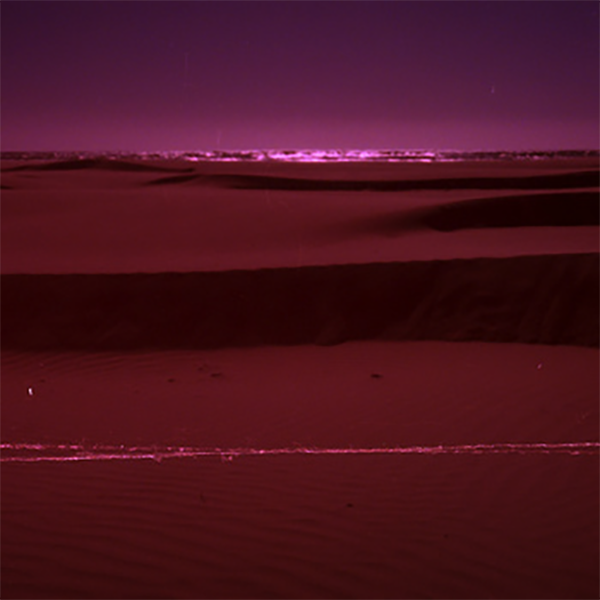
by Ian Mann
February 13, 2015
/ ALBUM
The music to be heard on "Live" represents a group edging ever closer to their own unique sound.
Ma
“Live”
(Loop Records -Digital release only)
Tom Challenger is one of the busiest young musicians on the London jazz scene. In addition to Ma the Huddersfield born saxophonist and composer also leads the New Orleans influenced ensemble Brass Mask and with organist Kit Downes forms one half of the duo Wedding Music. He is also a member of the bands Dice Factory, Outhouse, Fofoulah and Red Snapper and works as a sideman with guitarist Hannes Riepler’s band, keyboardist Dan Nicholls’ group Point X and with fellow saxophonist George Crowley’s new Can Of Worms quintet with its twin tenor front line.
Challenger’s activities embrace a variety of musical styles but there’s a unifying element in that he and many of his associates are members of the Loop Collective, an aggregation of creative young musicians living in north London. Loop runs its own label and is the outlet for recordings by Ma, an improvising group that combines elements of jazz and electronica.
Ma began in 2006 and their first recording, “Jyketie”, available only in digital formats, was released on the Mini Loop offshoot in 2008 featuring a trio of Challenger, drummer Dave Smith and Ross Stanley on Hammond organ. This core trio remained in place for the full album release “The Last” which appeared to highly favourable reviews in 2011. This time round the group sound was augmented by the electronics of Matt Calvert with the sound artist playing a pivotal role in the music and making an enormous contribution to the success of the album as a whole. I loved “The Last” and my review of the album can be found elsewhere on this site.
In the period immediately following the release of “The Last” Challenger ensured that Ma’s live performances were extensively documented and the three expansive performances that grace this digital release were recorded back in 2011. The music shows the group building upon the legacy of “The Last” and becoming more obviously “experimental” as they delve deeper into the worlds of drones, dub and electronica.
Publicity for “The Last” mentioned the influences of Oliver Messiaen, Supersilent and Burial. Other names that have been mentioned in association with Ma’s music have been Tony Williams’ Lifetime, John Coltrane, Christian Fennesz, Deathprod, Lee ‘Scratch’ Perry, AMM, Pink Floyd and electric era Miles Davis. I added Polar Bear and Van Der Graaf Generator to that list but whoever their influences might have been the music to be heard on “Live” represents a group edging ever closer to their own unique sound. There may be more electronica, with Challenger playing synthesiser in addition to his trademark tenor sax, but there’s a lot more improvisation and interaction too in these extended performances.
The album features two pieces recorded at The Forge in Camden by a sextet featuring the core trio of Challenger (sax & synths), Calvert (lap top, synths) and Smith (drums) augmented by Stanley on Hammond and by two percussionists, John Blease and Ben Bryant. The contributions of Blease and Bryant are sometimes processed by Calvert to become part of Ma’s eerie, post apocalyptic sounding electronic soundscape.
“Forge 1.1” features the spacey, atmospheric drones of Stanley’s Hammond, the dramatic drums and percussion of Smith, Blease and Bryant, the crackles, whistles and glitches of Calvert’s electronics and the baleful, but humanising wail of Challenger’s sax. From the title I assume that the music is entirely improvised yet it unfolds organically and logically with Stanley’s Hammond playing a key part in the proceedings. Challenger’s sax swims in and out of focus, sometimes adopting a gentler tone as the music ebbs and flows eventually seguing into “Forge 1.2” via a passage of organ, electronica and percussion. Here, with the percussionists in full flow the music adopts a more rhythmically orientated direction, albeit one underscored by malevolent drones and harsh crackles of electronic sound. Challenger’s elongated sax melody lines again help to provide the human aspect, this time in conjunction with the busy percussion, the primal nature of which contrasts well with the spacey, brooding electronica.
Any audience applause has been edited out and we move straight to an extended version of “The Last” recorded at The House Of Strange, an aptly named venue if ever there was one. This performance is by the core trio of Challenger, Calvert and Smith only and places an even greater reliance on electronic textures. It’s much more ambient than the recorded version but Smith’s sparse dramatically echoed dubby drums help to provide momentum before Challenger’s sax comes in about half way through and things really begin to build and move. Calvert shapes his electronic soundscapes with remarkable skill, richly atmospheric but retaining enough pulse and forward motion to avoid becoming becalmed. The performance ends with a drum feature of sorts with Smith’s beats being subtly mutated by his colleagues.
I find Ma’s spacey, droning, doomy, post apocalyptic music oddly compelling and this live recording finds them delving ever deeper into the realms of pure sound. With an electronics specialist in the group there are ready parallels with what Polar Bear do but Ma’s music is less consciously quirky and eclectic and probably darker at the end of the day. Nonetheless it’s very likely to appeal to a similar audience and is eminently accessible to most adventurous listeners.
For newcomers to Ma’s music I’d still steer them in the direction of the full length album “The Last” but for established fans “Live” represents a fascinating aural document and constitutes a successful artistic statement in its own right.
blog comments powered by Disqus